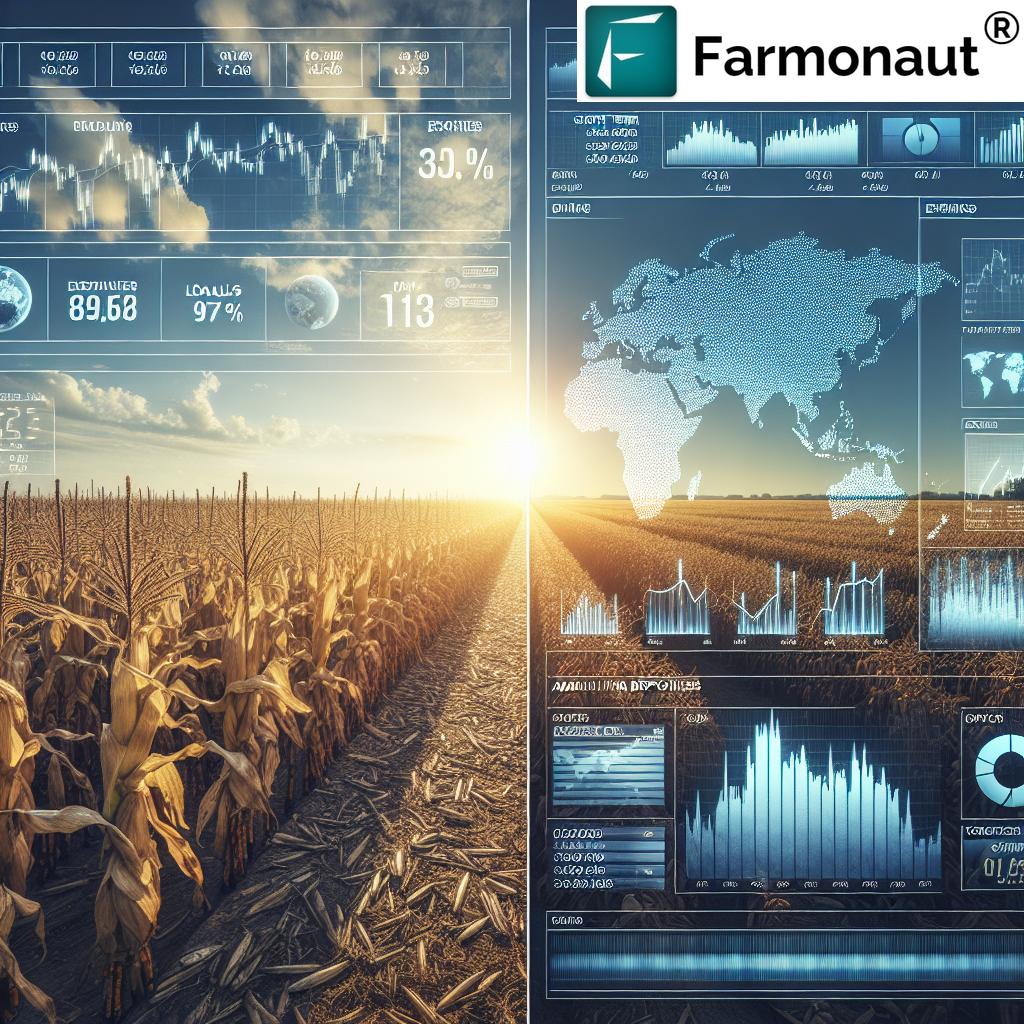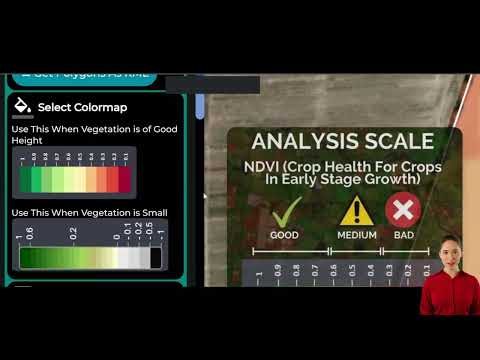Revolutionizing Agricultural Futures Trading: Weekly Options Expand to Meet Growing Global Demand
“Agricultural weekly options trading volume hit record highs, reflecting growing demand for flexible risk management tools.”
In the ever-evolving world of agricultural futures trading, we’re witnessing a significant shift in how stakeholders manage agricultural price risks. The introduction of expanded weekly options for grains and oilseed futures is revolutionizing the agricultural derivatives market, offering traders unprecedented flexibility and precision in their risk management strategies. As we delve into this transformative development, we’ll explore how these new offerings are reshaping commodity trading strategies and driving growth in the agricultural sector.
The Dawn of a New Era in Agricultural Futures Trading
On February 10, 2025, CME Group, the world’s leading derivatives marketplace, announced a game-changing expansion in their suite of Weekly agricultural options. This new offering includes expiry options for every day of the trading week, providing market participants with enhanced flexibility as they approach the growing season. The timing couldn’t be more crucial, as the global agricultural commodities market faces increasing economic uncertainty.
John Ricci, Managing Director and Global Head of Agricultural Markets at CME Group, emphasized the significance of this development: “The addition of daily expirations allows our clients to manage price risks with greater precision during these economically uncertain times. We’ve observed a growing demand for short-term options, and our expanded offerings directly respond to this need for adaptable trading strategies.”

This expansion in the agricultural derivatives market is not just about offering more options; it’s about providing tools that align with the rhythms and realities of modern agriculture. The new daily expiries are strategically timed to coincide with key events like USDA reports and weekends, which often carry significant macro-economic risks.
Meeting the Growing Demand for Short-Term Agricultural Options
The popularity of Weekly agricultural options has skyrocketed, achieving record trading volumes in 2024. With an average daily volume (ADV) of 18,964, these options saw a remarkable 72% increase compared to the previous year. Some product categories experienced even more dramatic growth:
- Soybean Oil options rose by an astounding 220%
- Soybean options increased by 109%
- Corn options grew by 63%
This momentum carried into January 2025, where the ADV for Weekly agricultural options hit 28,037, marking the third-highest month on record. These figures underscore the market’s appetite for more flexible and precise trading instruments in the agricultural sector.
Expanding the Suite of Agricultural Options
CME Group’s expanded Weekly options include contracts for:
- Corn futures
- Soybean futures
- Wheat futures
- Soybean Oil futures
- Soybean Meal futures
These options are available for trading from Monday through Thursday, subject to the rules established by the Chicago Board of Trade (CBOT). This initiative aims to align with the market’s evolving needs and provides market participants with innovative tools to manage risks effectively.
The Impact on Commodity Trading Strategies
The introduction of these expanded weekly options is having a profound impact on commodity trading strategies. Traders now have the tools to:
- Implement more precise risk management techniques
- Capitalize on short-term market movements
- Align trading strategies with key agricultural events and reports
- Manage exposure to weekend risk more effectively
Matthew Garmon, Head of Trading at Greenfield Commodities, LLC, shared his perspective: “The alignment of option expirations with major events like USDA’s WASDE reports or weekends is crucial. These periods often carry substantial macroeconomic risks. Daily expirations enhance our ability to manage risks precisely, allowing us to make more informed decisions about options structures tailored to specific temporal requirements.”
Enhancing Flexibility in Agricultural Market Participation
The expanded suite of Weekly agricultural options is not just about risk management; it’s also about providing traders with greater flexibility to express short-term market views. Steve Sanders, EVP of Marketing and Product Development at Interactive Brokers, noted: “These new options will furnish traders with the ability to convey short-term market views more efficiently, facilitating better investment strategies.”
This increased flexibility is particularly valuable in the context of the growing global demand for agricultural commodities. As the world population continues to rise and dietary habits evolve, the ability to trade agricultural futures and options with precision becomes increasingly important.

“New grain and oilseed futures options offer daily expiries, aligning with key events like USDA reports and weekends.”
The Role of Technology in Agricultural Futures Trading
As we witness this revolution in agricultural futures trading, it’s important to recognize the role of technology in enabling these advancements. Futures and options trading platforms have evolved significantly, providing traders with powerful tools to analyze markets, execute trades, and manage risk.
One company at the forefront of this technological revolution is Farmonaut. While not directly involved in futures trading, Farmonaut’s innovative approach to agricultural technology complements the advancements we’re seeing in the futures market.
Farmonaut’s web app provides valuable insights that can inform trading decisions. By leveraging satellite imagery and artificial intelligence, Farmonaut offers real-time crop health monitoring and AI-based advisory systems. This information can be invaluable for traders looking to understand potential supply-side factors that could impact agricultural futures prices.
The Intersection of Precision Agriculture and Futures Trading
As we explore the evolving landscape of agricultural futures trading, it’s fascinating to consider how advancements in precision agriculture might influence market dynamics. Companies like Farmonaut are at the forefront of this intersection, providing tools that could potentially impact how traders assess agricultural markets.
Farmonaut’s satellite-based crop health monitoring system, for instance, offers insights that could be valuable for traders trying to gauge potential yield and supply. While Farmonaut itself is not involved in trading, the data it provides could inform trading strategies, especially when it comes to assessing regional crop conditions that might impact futures prices.
For those interested in exploring how satellite technology is changing agriculture, Farmonaut offers several ways to access their platform:
For developers looking to integrate agricultural data into their own systems, Farmonaut also offers an API with comprehensive developer documentation.
The Global Impact of Expanded Agricultural Options
The introduction of expanded weekly options for grains and oilseed futures has implications that extend far beyond the trading floor. As the global agricultural commodities market continues to face economic uncertainty, these new tools provide stakeholders throughout the agricultural supply chain with more effective means of managing risk and navigating market volatility.
For farmers, the ability to hedge their production with more precision could lead to more stable incomes and better financial planning. For food manufacturers and distributors, these options offer new ways to manage input costs and protect margins in a volatile market environment.
Moreover, the increased liquidity and market participation that these new options are likely to bring could lead to more efficient price discovery in agricultural markets. This, in turn, could benefit all market participants by providing clearer signals about supply and demand dynamics.
The Future of Agricultural Risk Management
As we look to the future, it’s clear that the landscape of agricultural risk management is evolving rapidly. The expanded suite of weekly options is just one example of how financial instruments are adapting to meet the needs of a changing agricultural sector.
We can expect to see further innovations in this space, potentially including:
- Even more granular options contracts tailored to specific agricultural events or time periods
- Integration of real-time agricultural data into trading platforms
- Development of new derivative products to address emerging risks in agriculture, such as climate change impacts
As these financial tools evolve, so too will the strategies employed by traders, farmers, and other stakeholders in the agricultural sector. The key to success will be staying informed about these developments and understanding how to leverage them effectively.
Comparative Analysis: Weekly Agricultural Options
To better understand the impact of the new expanded weekly options, let’s take a closer look at how they compare to traditional options across different commodities:
| Commodity | Traditional Options Expiry | New Weekly Options Expiry | Daily Expiry Availability | Alignment with USDA Reports | Estimated Trading Volume Increase (%) |
|---|---|---|---|---|---|
| Corn | Monthly | Weekly | Yes | Yes | 63 |
| Soybean | Monthly | Weekly | Yes | Yes | 109 |
| Wheat | Monthly | Weekly | Yes | Yes | 85 |
| Soybean Oil | Monthly | Weekly | Yes | Yes | 220 |
| Soybean Meal | Monthly | Weekly | Yes | Yes | 95 |
This table clearly illustrates the increased flexibility and precision offered by the new weekly options across all major grain and oilseed commodities. The daily expiry availability and alignment with USDA reports provide traders with powerful tools for managing risk and expressing market views with greater accuracy.
The Role of Artificial Intelligence in Agricultural Trading
As we explore the future of agricultural futures trading, it’s important to consider the growing role of artificial intelligence (AI) in this sector. AI is increasingly being used to analyze vast amounts of data, identify patterns, and make predictions that can inform trading decisions.
While not directly involved in futures trading, companies like Farmonaut are leveraging AI in ways that could indirectly impact agricultural markets. Farmonaut’s Jeevn AI Advisory System, for instance, uses AI to deliver real-time insights and expert crop management strategies to farmers. This type of technology could potentially influence supply-side factors that traders need to consider.
The Importance of Sustainable Agriculture in Futures Trading
As the world becomes increasingly focused on sustainability, it’s worth considering how this trend might impact agricultural futures trading. Sustainable farming practices can affect crop yields, quality, and long-term land productivity – all factors that can influence futures prices.
While Farmonaut is not involved in futures trading, its focus on sustainable agriculture through features like carbon footprint tracking aligns with this growing trend. Traders may need to consider such sustainability factors when making long-term predictions about agricultural commodities.
Farmonaut Subscriptions
For those interested in leveraging advanced agricultural technology to inform their understanding of market dynamics, Farmonaut offers a range of subscription options:
Earn With Farmonaut
Earn 20% recurring commission with Farmonaut’s affiliate program by sharing your promo code and helping farmers save 10%. Onboard 10 Elite farmers monthly to earn a minimum of $148,000 annually—start now and grow your income!
For more information about this opportunity, check out Farmonaut’s affiliate program.
Conclusion: Embracing the Future of Agricultural Futures Trading
As we’ve explored in this comprehensive overview, the expansion of weekly options for grains and oilseed futures represents a significant evolution in agricultural futures trading. These new tools offer unprecedented flexibility and precision in risk management, allowing stakeholders throughout the agricultural sector to navigate market volatility with greater confidence.
From aligning option expirations with key events like USDA reports to providing daily expiry options, these innovations are reshaping how we approach agricultural price risks. The record-breaking trading volumes we’ve seen demonstrate the market’s appetite for these more adaptable trading strategies.
As we look to the future, it’s clear that the intersection of finance and technology will continue to drive innovations in agricultural trading. While companies like Farmonaut focus on providing cutting-edge agricultural technology rather than trading platforms, the insights they offer could become increasingly valuable for traders seeking to understand the factors influencing agricultural markets.
In this rapidly evolving landscape, staying informed and adaptable will be key. Whether you’re a trader, farmer, or other stakeholder in the agricultural sector, understanding these new tools and how to leverage them effectively will be crucial for success in the years to come.
Frequently Asked Questions
- What are weekly options in agricultural futures trading?
Weekly options are short-term derivative contracts that expire each week, offering traders more flexibility in managing risk and expressing market views compared to traditional monthly options. - How do expanded weekly options benefit agricultural traders?
Expanded weekly options provide more precise risk management, allow for capitalization on short-term market movements, and align trading strategies with key agricultural events and reports. - What commodities are covered by CME Group’s new weekly options?
The new weekly options cover Corn, Soybean, Wheat, Soybean Oil, and Soybean Meal futures. - How has the trading volume for weekly agricultural options changed?
Weekly agricultural options saw a 72% increase in average daily volume in 2024 compared to the previous year, with some products like Soybean Oil options experiencing growth of up to 220%. - How do these new options align with USDA reports?
The new options offer daily expiries that can be aligned with key events like USDA reports, allowing traders to manage risks associated with these potentially market-moving events more precisely. - What role does technology play in modern agricultural futures trading?
Technology plays a crucial role in providing advanced trading platforms, real-time market data, and analytical tools. Companies like Farmonaut, while not involved in trading, offer technological solutions that can provide valuable insights for agricultural market participants. - How might sustainable agriculture impact futures trading?
Sustainable farming practices can affect crop yields, quality, and long-term land productivity, which are all factors that can influence futures prices. Traders may need to consider sustainability trends when making long-term market predictions. - What is the potential future of agricultural risk management?
The future of agricultural risk management may include even more granular options contracts, integration of real-time agricultural data into trading platforms, and new derivative products addressing emerging risks like climate change impacts.







